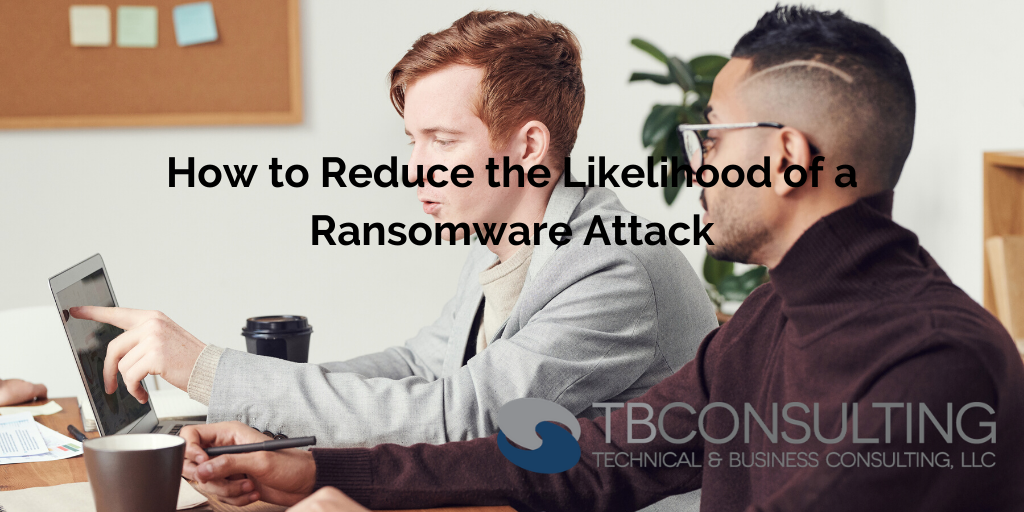 Recent years have seen businesses become increasingly vulnerable to ransomware attacks. Whether you’re a small clothing company or a Fortune 500 corporation—nobody is safe from this dangerous form of malware.
Recent years have seen businesses become increasingly vulnerable to ransomware attacks. Whether you’re a small clothing company or a Fortune 500 corporation—nobody is safe from this dangerous form of malware.
The frequency of full-scale attacks has grown to an immense level in recent years as companies of all sizes have been compromised in one capacity or another. Gartner has gone so far as to predict that up to 60% of digital businesses will suffer from a ransomware attack in 2020.
Although ransomware has been on the rise, there are certain steps that can help mitigate potential risks. Let’s take a look at how ransomware occurs and how businesses can take a proactive approach to prevent these types of disasters.
Understand how Ransomware is Different
Individuals not akin to the IT world may mistakenly place ransomware in the category of other computer-related nuisances such as common viruses. Ransomware operates in a different capacity as it locks up critical files and simultaneously prevents users from accessing this information.
Ransomware is malware designed strictly for the purpose of encrypting a victim’s files. Imagine a burglar breaking into your house and locking all of your valuables into a safe where only they have the key. Access to these encrypted files are blocked and the cyber criminals demand a ransom prior to unlocking these abducted files.
Victims must meet the ransom demands set forth by their cyber attackers or else be forever forbidden from regaining file access.
How Does Ransomware Work?
Ransomware can infiltrate computer systems in a number of different ways. One of the most common methods is through phishing scams. Oftentimes, individuals click on untrusted links or seemingly legitimate emails—whilst unknowingly opening the floodgates to Pandora's box of cyber attacks. In fact, it was recently reported by Forbes that one of the “Shark Tank” stars lost $380,000 in a phishing scam that targeted one of their employees.
Once infected files stealthily bypass digital barriers, malware can take hold of computer systems encrypting files and preventing user access. The impact of ransomware is not always immediate as it can take time to spread throughout systems. Like a scratchy throat that becomes a full blown case of pneumonia, ransomware can take time to fully penetrate digital worlds. This form of malware may be incubating for days, weeks, or months before launching full blown digital warfare.
The good news is steps can be taken to shield digital systems from potential ransomware attacks. Let’s take a look at some fundamental steps businesses can take to prevent the likelihood of ransomware ever entering digital safe spaces.
Next-Gen Antivirus
Detection is the most fundamental step that can be taken to help prevent ransomware. At the basic level, protection starts with having a solid antivirus program in place. Minimalist softwares such as Microsoft Defender do not provide sufficient protection strategies. Next-gen endpoint protection programs, on the other hand, can instill additional safeguards against harmful ransomware.
A number of options are currently available on the marketplace including:
- Silence
- Carbonblack
- Crowdstrike
- Sophos
- NSS Labs
What separates next gen antiviruses from traditional ones is how they go about analyzing malware samples. While basic antiviruses simply scan a computer looking for bad signatures, next gen antiviruses take the analysis a step further by running files in digital environments while incorporating more advanced security techniques. By analyzing user and system behavior, threats can be detected and precautionary actions can be taken.
Next Gen Firewall
While traditional firewalls tend to be basic in nature and operate based purely off of source IP addresses, next gen firewalls can provide an additional layer of protection through application awareness and advanced intrusion prevention systems.
Next gen firewalls have the capability of inspecting web traffic and preventing unauthorized computer system activity. If a user clicks an illegitimate link or opens an infected file—the next gen firewall can prevent the computer from interacting with these corrupted sources. This preventative measure reduces the risk of potential vulnerabilities while simultaneously improving network performance.
Having Backups in Place
Maintaining and managing data backups can serve a multitude of purposes. Data may be lost or compromised if harmful malware infiltrates operational systems. Backups provide copies of critical data in the case that internal systems become infected.
The risks associated with data loss can leave a devastating financial impact on businesses, to the point of causing complete organizational shutdown. Failure to appropriately backup all critical data systems can financially impact business operations for weeks or months at a time. Worst case scenario businesses may even be forced to completely seize operations if data is permanently lost.
How TBC Can Help Prevent Ransomware
The best way to fight ransomware is to prevent it from happening altogether. Partnering with TBConsulting can provide the extra layer of protection needed to prevent ransomware from attacking your business.
At TBConsulting—we provide a number of services geared towards shielding your business from ransomware attacks. As a distinguished third-party organization, TBConsulting designs preventative measures to safeguard against harmful ransomware.
By offering 24 hour protection and support, TBC is the answer for all of your security needs. If you would like to learn more about protecting your company from attack, please contact us for a 30 minute free consultation. Keeping your organization safeguarded against a disaster is only a phone call or click away.
.png)

